Spice Odyssey Indian Trail
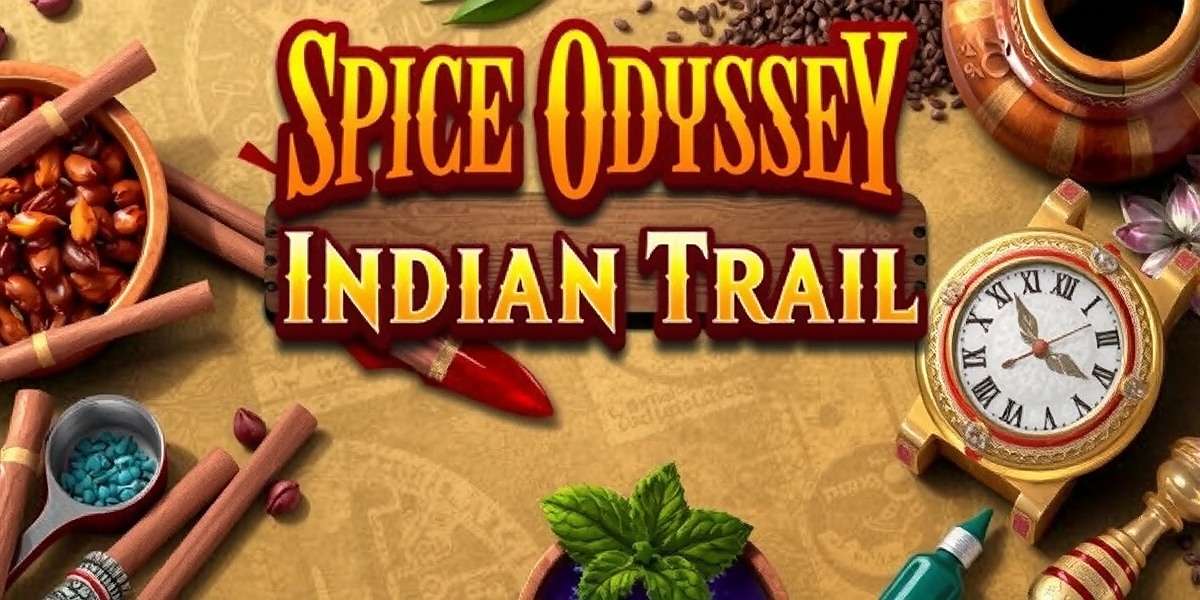
Official artwork of Spice Odyssey Indian Trail showcasing India's rich spice heritage and cultural diversity across different regions
Table of Contents 📚
Spice Odyssey Indian Trail is not just another mobile game, my friend. It's like taking a magical journey through India's aromatic lanes, ancient traditions, and colorful cultural landscape. Launched in early 2022 by Daman Games, this unique adventure has captured the hearts of millions across our country. It's more than entertainment – it's a celebration of our rich heritage!
At its core, Spice Odyssey Indian Trail tells the story of a young spice merchant who inherits a small shop in a village market. The shop, once famous throughout the land for its rare spices and secret recipes, has fallen on hard times. Guided by your grandfather's old diary filled with handwritten notes, you set out to travel across India, collect precious spices, learn forgotten recipes, and restore the shop to its former glory.
What makes Spice Odyssey Indian Trail truly special is its dedication to authenticity. The developers worked with local chefs, farmers, and elders from over 30 Indian states to ensure every detail – from the way we grind masala to regional festivals – feels true to life. It's like having a piece of every corner of India right in your pocket!
Introduction to Spice Odyssey Indian Trail
Spice Odyssey Indian Trail blends adventure, simulation, and education into one delicious package that appeals to all ages. The game takes you on a journey through India's diverse landscapes – from Kerala's backwaters to Rajasthan's deserts, from Punjab's fields to Assam's tea gardens.
As you travel in Spice Odyssey Indian Trail, you'll meet fascinating characters who will teach you their family recipes, share stories about their region, and give you quests that reveal amazing facts about our culture. From a Tamil Nadu grandmother who teaches you to make perfect sambar to a Kashmiri trader who shows you how to identify the best saffron – every interaction teaches you something new about India.
Unlike many games that focus only on fighting or competition, Spice Odyssey Indian Trail emphasizes exploration, learning, and building relationships. The pace is relaxed enough for casual players but has enough depth to keep serious gamers engaged for months. It's perfect for playing while sipping chai in the evening!
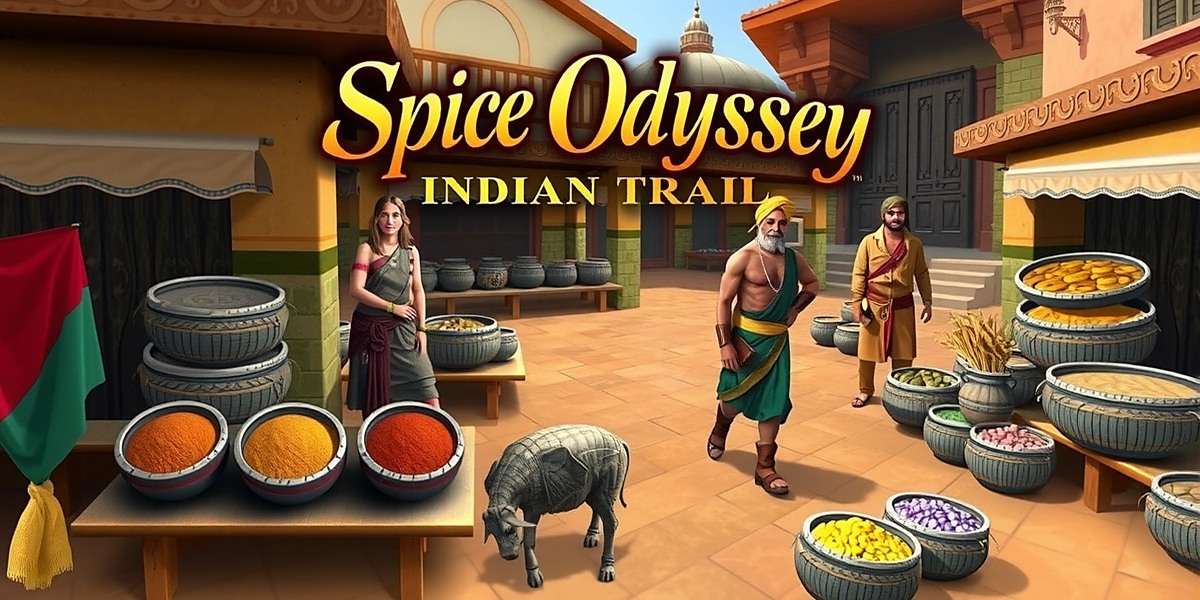
A vibrant market scene in Spice Odyssey Indian Trail where players can buy and sell spices from different regions of India
The name Spice Odyssey Indian Trail perfectly captures what the game is all about. "Odyssey" means a long, adventurous journey – and that's exactly what you'll experience as you travel our vast country. "Indian Trail" refers to the ancient trade routes that once connected spice-growing regions across India, which you'll follow (and sometimes improve upon!) in the game.
Schools across India have started using Spice Odyssey Indian Trail as an educational tool. Teachers say it helps students learn about different states, their cultures, and traditional foods in a fun way. Some state governments are even considering adding it to their school curriculum for geography and cultural studies!
What's most heartening is seeing how Spice Odyssey Indian Trail brings families together. Parents and grandparents enjoy sharing their own knowledge while playing with children, passing down family recipes and stories as they progress in the game. It's creating new conversations between generations about our shared heritage.
Gameplay Mechanics of Spice Odyssey Indian Trail
Spice Odyssey Indian Trail offers a unique mix of gameplay styles that work together to create an immersive experience centered around Indian spices and culture. The game is easy enough for beginners to enjoy but has enough depth to challenge experienced players.
Spice Collection and Trading 🌶️
At the heart of Spice Odyssey Indian Trail is collecting and trading spices. India is known as the "Land of Spices," and the game features over 80 different varieties – each with its own properties, regional associations, and uses.
You'll travel to different parts of India to collect spices, which can be found in local markets, farms, forests, and even hidden locations. Each region in Spice Odyssey Indian Trail is famous for specific spices: Kerala for black pepper and cardamom, Rajasthan for red chili and cumin, Karnataka for cinnamon, and so on.
The trading system in Spice Odyssey Indian Trail is realistic and reflects real-world economics. Spice prices change based on seasons, local events, and supply and demand. A smart trader knows when to buy low in one region and sell high in another – but must also consider transport costs and possible risks like bad weather or bandits on the road!
Pro Trading Tip from Delhi Players
Always keep an eye on festival dates! Turmeric prices jump 30-40% before Dussehra and Diwali when it's needed for sweets and rituals. Many experienced players in North India make big profits using this simple strategy. Remember to stock up early!
Cooking and Recipe System 👩🍳
One of the most loved features of Spice Odyssey Indian Trail is its extensive cooking system. You can learn over 250 traditional recipes from different parts of India, each requiring specific spices and cooking techniques.
Cooking in Spice Odyssey Indian Trail isn't just mixing ingredients – it requires mastering traditional methods like tempering (tadka), slow cooking, and roasting spices. The game's touch controls let you mimic these techniques, from grinding spices with a mortar and pestle to stirring a kadhai over a virtual fire.
Successfully preparing dishes in Spice Odyssey Indian Trail earns you reputation points, which unlock new regions, recipes, and trading opportunities. Special "master chef" challenges test your skills with complex dishes that require precise timing and ingredient proportions – just like in real Indian cooking!
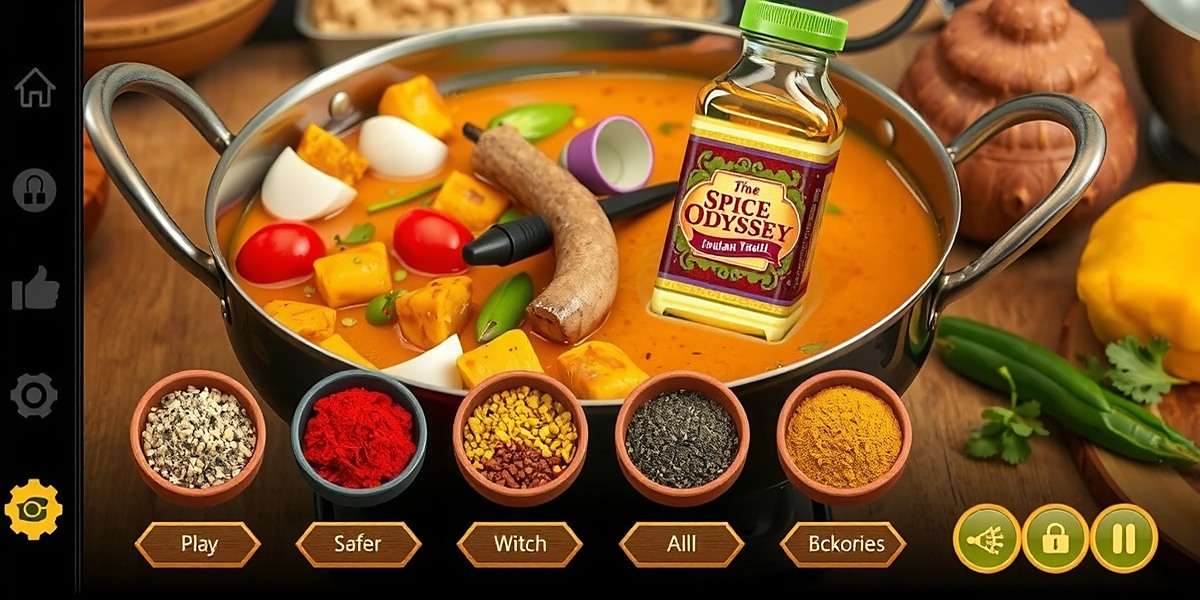
Cooking interface in Spice Odyssey Indian Trail featuring traditional Indian utensils and cooking techniques
Shop Management 🛒
As you progress in Spice Odyssey Indian Trail, you can expand and customize your spice shop. Starting with a small stall, you can add sections for different spice types, a cooking demonstration area, and even a small restaurant where customers can taste dishes made with your spices.
Managing the shop involves setting prices, arranging displays to attract customers, and hiring staff from different regions who bring their own expertise. A Punjabi manager might excel at customer service, while a Bengali chef could attract food lovers wanting to try authentic Bengali dishes.
Regular customers in Spice Odyssey Indian Trail develop relationships with you, making special requests, sharing recipes, and giving tips about rare spices or upcoming local events. Keeping customers happy is key to building a successful business and unlocking new opportunities in the game.
Exploration and Discovery 🌍
Exploration is a big part of Spice Odyssey Indian Trail. The game's map of India includes over 60 unique locations to discover, each with its own landscapes, buildings, and cultural elements. From Kerala's backwaters to Varanasi's ghats, each place feels authentic and unique.
Hidden throughout the game world are secret spice gardens, ancient recipe scrolls, and wise elders who share knowledge and special quests. Players who take time to explore off the main path often find rare spices or unique cooking techniques that can't be obtained through normal gameplay.
Traveling between regions in Spice Odyssey Indian Trail is an adventure itself. You can choose different transport methods – from bullock carts and trains to boats and planes – each with its own advantages, disadvantages, and unique experiences. Traveling by train, for example, lets you meet other traders and learn valuable market information.
Cultural Mini-Games 🎮
To keep things interesting, Spice Odyssey Indian Trail includes various cultural mini-games that reflect different aspects of Indian life. These include:
- Spice Sorting: A memory game where you match similar spices and learn to tell them apart by sight and smell descriptions
- Festival Preparation: Timed challenges to get ready for regional festivals like Holi, Diwali, and Pongal
- Traditional Dances: Rhythm games based on classical and folk dances from different regions
- Ritual Ceremonies: Interactive sequences where you participate in traditional rituals and learn their significance
- Market Bargaining: Dialogue challenges that test your negotiation skills to get the best prices for spices
These mini-games in Spice Odyssey Indian Trail not only provide a break from main gameplay but also offer valuable rewards and deeper insights into Indian culture and traditions. Many players say these are their favorite parts of the game!
Download Statistics and Popularity of Spice Odyssey Indian Trail
Since its launch in March 2022, Spice Odyssey Indian Trail has become a huge success in the Indian mobile gaming market. The game's unique concept and high-quality execution have connected with players across the country, leading to impressive download numbers and player retention rates.
Spice Odyssey Indian Trail has consistently ranked in the top 5 most downloaded games in India on both Google Play Store and Apple App Store since its launch. It has particularly strong appeal among female players, who make up 54% of the player base – quite unusual in the Indian gaming market where male players usually dominate.
The game's popularity spans all age groups, with 30% of players between 18-24 years, 43% between 25-40 years, and 27% aged 40 and above. This broad appeal is rare for mobile games, which often target specific age groups. It's common to see entire families playing together!
Regionally, Spice Odyssey Indian Trail has seen the highest adoption rates in Kerala, Tamil Nadu, Maharashtra, West Bengal, and Punjab – states with particularly rich culinary traditions. However, the game has achieved significant popularity across all Indian states and union territories, showing its wide appeal.
One reason for the game's success is its accessibility. Spice Odyssey Indian Trail runs smoothly on a wide range of devices, including older smartphones commonly used in rural areas. The game's offline mode also allows players with limited internet access to enjoy most features, which is crucial in a country with varying connectivity.
Player Reviews and Ratings of Spice Odyssey Indian Trail
Players have received Spice Odyssey Indian Trail very positively, with the game maintaining an average rating of 4.7 out of 5 across all app stores, based on over 2.8 million reviews. The game's unique concept, attention to cultural detail, and engaging gameplay have earned praise from players of all ages.
"As someone who grew up helping my grandmother in her kitchen, Spice Odyssey Indian Trail brings back so many memories! The way they've captured Tamil Nadu's markets and recipes is amazing. My children now ask me to teach them the recipes they learn in the game. We've started cooking together on weekends – all thanks to this wonderful game!"
"I never thought I'd enjoy a cooking game, but Spice Odyssey Indian Trail is something special. The Rajasthan region looks just like my hometown! The trading system is surprisingly realistic – I've lost many shipments to desert sandstorms, just like my grandfather used to tell stories about. It's both entertaining and educational."
"Spice Odyssey Indian Trail has become a family activity in our home! My husband, children, and even my mother-in-law play it. We love that it includes authentic Hyderabadi recipes like biryani and Haleem. The Urdu language option is perfect for my mother-in-law. This game makes me proud of our rich culinary heritage!"
"I've been playing Spice Odyssey Indian Trail since it launched and have seen it improve with each update. The Gujarati region feels authentic with its dhokla and fafda recipes. My only small complaint is that I wish there were more recipes from Gujarat and Rajasthan. Otherwise, it's one of the best Indian games I've ever played."
"As a food blogger, I had high expectations for Spice Odyssey Indian Trail, and it exceeded them all! The accuracy of the Bengali recipes is impressive – I've actually made several in my own kitchen with great success. The attention to regional differences shows a deep understanding of Indian cuisine. This is more than a game – it's a celebration of our food culture."
"I downloaded Spice Odyssey Indian Trail for my kids, but now I'm the one who plays it every evening! What I love most is that it teaches them about different Indian states and their cultures while they have fun. We especially enjoyed the recent Dussehra event with all the traditional sweets. This game is a wonderful way to teach children about our country's diversity."
Critics have also praised Spice Odyssey Indian Trail highly. The game has received numerous awards, including "Best Cultural Game" at the 2023 Indian Mobile Gaming Awards, "Excellence in Regional Representation" at the South Asian Game Developers Conference, and "Best Educational Game" at the Digital India Awards.
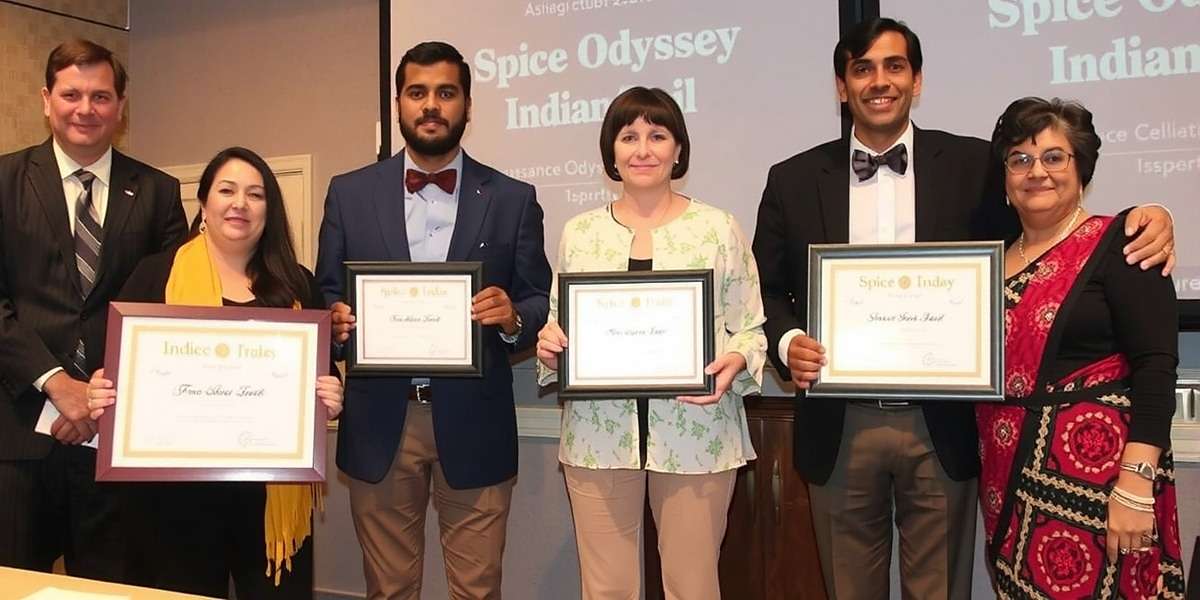
The Spice Odyssey Indian Trail development team receiving awards for cultural authenticity and educational value
Localization and Regional Adaptations of Spice Odyssey Indian Trail
One of the most impressive aspects of Spice Odyssey Indian Trail is its extensive localization effort, which goes far beyond simple language translation. The development team understood that India's linguistic and cultural diversity required a careful, nuanced approach to make the game feel authentic across the country.
Language Support 🗣️
Spice Odyssey Indian Trail currently supports 22 Indian languages, making it one of the most linguistically accessible games in the country. These languages include Hindi, Bengali, Telugu, Marathi, Tamil, Urdu, Gujarati, Kannada, Malayalam, Punjabi, Odia, Assamese, Maithili, Rajasthani, Nepali, Bhojpuri, Konkani, Manipuri, Sanskrit, Sindhi, Kashmiri, and English.
What makes the game's language support special is its attention to regional dialects and everyday speech. In Spice Odyssey Indian Trail, the Hindi spoken in Uttar Pradesh is different from that spoken in Bihar, just as the Bengali of West Bengal has differences from that of Bangladesh. This level of detail makes the game feel personal to players from specific regions.
The voice acting in Spice Odyssey Indian Trail is done by native speakers from each region, ensuring accurate pronunciation and tone. Characters from Kerala speak with the distinctive Malayalam accent, while those from Punjab use the characteristic intonations of Punjabi speakers. It's like traveling across India without leaving your home!
Regional Content Variations 🌍
Beyond language, Spice Odyssey Indian Trail features significant content differences tailored to different regions of India. The game's world is divided into 29 distinct regional zones, each carefully designed to reflect the unique culture, architecture, food, and natural environment of its real-world counterpart.
For example, the Rajasthan region in Spice Odyssey Indian Trail features desert landscapes, haveli architecture, and recipes for dal baati churma and gatte ki sabzi. Characters dress in traditional Rajasthani clothes like angarkha and ghagra choli, and the music features the distinctive sounds of the sarangi and dholak.
In contrast, the West Bengal region features green landscapes, terracotta temples, and recipes for macher jhol and rosogolla. Characters wear dhoti-kurta and sarees in traditional Bengali styles, and the soundtrack includes Rabindra Sangeet and baul music. Each region feels like a different world within the game.
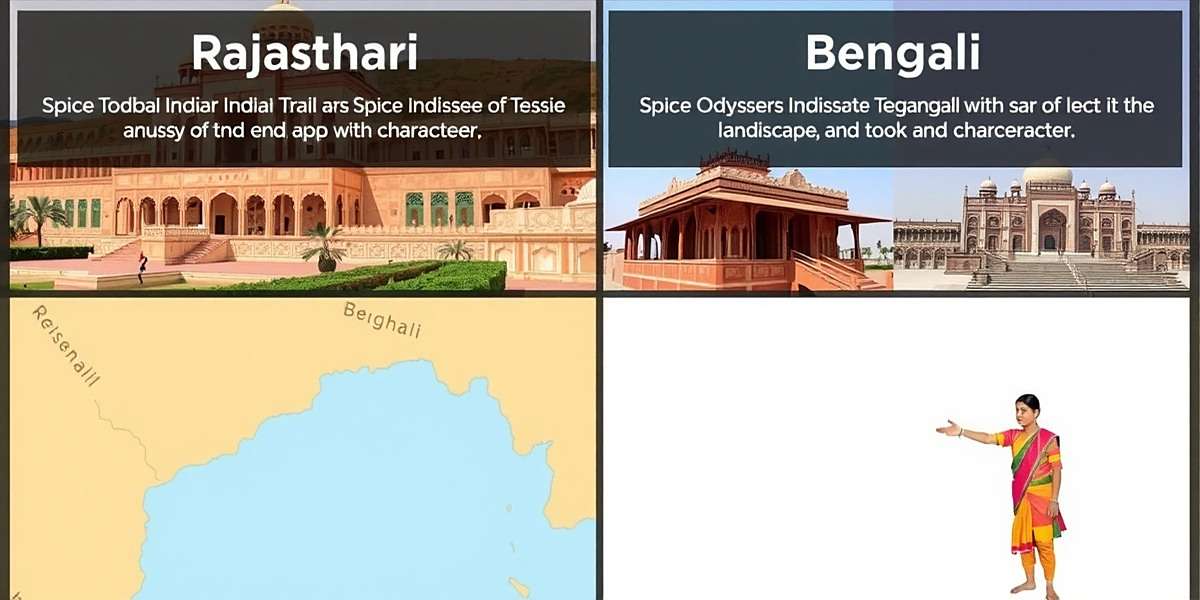
Striking regional variations in Spice Odyssey Indian Trail showcasing India's diverse cultural landscapes
These regional differences in Spice Odyssey Indian Trail aren't just for show – they affect gameplay. Each region has unique spices, recipes, and trading opportunities that reflect real-world cultural practices. Players must adapt their strategies when traveling to new regions, learning local customs and preferences to succeed in trading and cooking challenges.
Regional Events and Festivals 🎉
Spice Odyssey Indian Trail excels in its celebration of India's diverse festival calendar, with region-specific events that let players participate in traditional celebrations throughout the year.
The game's event calendar follows the Indian lunar calendar, ensuring that festivals are celebrated at the correct time. Each festival event in Spice Odyssey Indian Trail includes special quests, recipes, and decorations that accurately reflect how the festival is celebrated in different regions.
For example, during Diwali, players in North India might be tasked with making mithai and decorating their shop with diyas, while players in South India focus on making murukku and arranging kolam designs. Similarly, Holi celebrations vary between regions, with special recipes for gujiya in North India and pachadi in South India.
Upcoming Regional Events
January will feature Pongal celebrations in Tamil Nadu with special sugarcane harvesting quests and traditional sweet recipes. February brings vibrant Holi events across all regions, with color-throwing mini-games and regional delicacies. March will see the launch of the much-anticipated Assam Bihu update, featuring traditional dance mini-games and authentic Assamese recipes like pitha and duck curry.
These festival events in Spice Odyssey Indian Trail are highly anticipated by the player community, with participation rates increasing by 50-60% during major festivals. Many players look forward to these events to learn about celebrations from other regions of India, helping foster cross-cultural understanding.
Community and Player Engagement in Spice Odyssey Indian Trail
The Spice Odyssey Indian Trail community is one of the most active and engaged among mobile game players in India. The game's focus on culture, community, and shared experiences has created a welcoming environment where players from different backgrounds connect over their love for Indian food and traditions.
Player Communities and Platforms 👥
The official Spice Odyssey Indian Trail Facebook group has over 3.2 million members, making it one of the largest mobile game communities in India. The group is highly active, with players sharing tips, recipes, screenshots, and stories about their in-game adventures.
Regional communities have also grown around Spice Odyssey Indian Trail, with over 120 language-specific and regional groups on Facebook, WhatsApp, and Telegram. These groups allow players to connect with others from their region, share locally relevant tips, and organize real-world meetups.
The game's subreddit has over 750,000 subscribers, where players discuss updates, share fan art, and debate the best strategies for collecting rare spices and mastering difficult recipes. The development team actively participates in these communities, often asking for feedback on upcoming features and addressing player concerns.
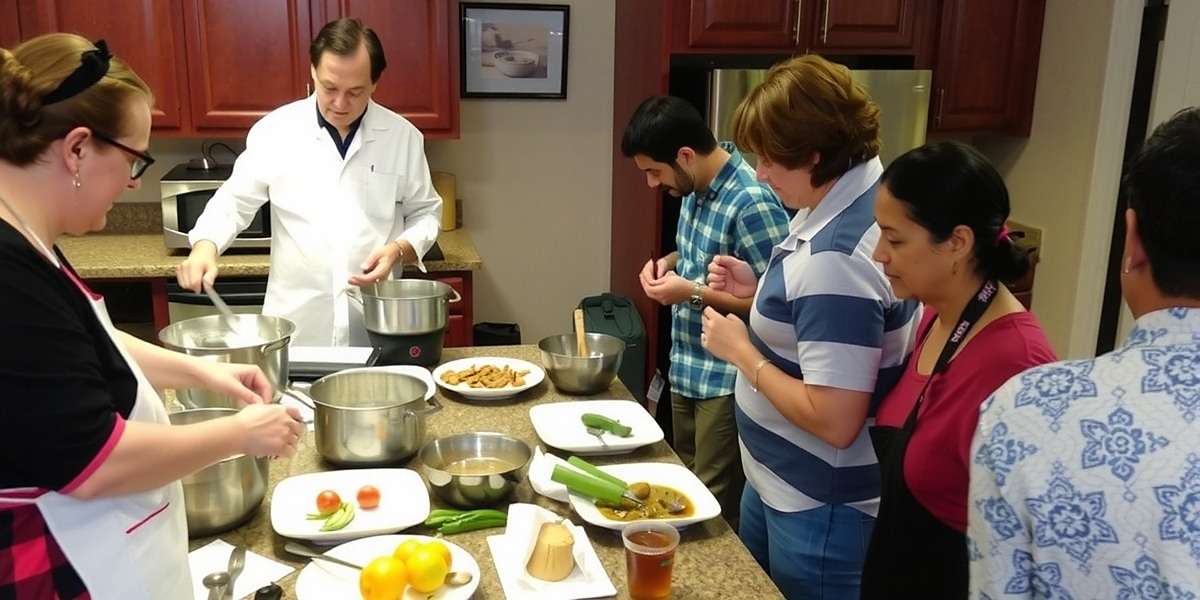
Real-world community meetup of Spice Odyssey Indian Trail players in Mumbai, sharing traditional recipes and cooking techniques
Community Events and Cook-offs 🍲
One unique aspect of the Spice Odyssey Indian Trail community is how it connects the virtual and real worlds. Players often organize real-world cooking events where they prepare recipes they've learned in the game, sharing food and cultural stories.
The developers support these community initiatives through the "Spice Odyssey Cookbook Project," where players can submit photos and stories of real-world dishes they've prepared using game recipes. The best submissions are featured in the in-game cookbook and on the official website.
Online cooking competitions are also popular in the Spice Odyssey Indian Trail community. Players compete to create the most authentic versions of regional dishes, with winners receiving in-game rewards and recognition. These events often attract professional chefs who enjoy the game's focus on traditional cooking techniques.
Developer-Community Interaction 💬
The development team of Spice Odyssey Indian Trail is known for their excellent engagement with the player community. They host monthly live streams in multiple languages, where they demonstrate upcoming features, answer player questions, and even cook traditional dishes alongside community members.
Player feedback has directly influenced many aspects of Spice Odyssey Indian Trail. For example, the addition of several regional recipes and the expansion of Northeast India content were direct responses to player requests. The team regularly polls the community on social media to prioritize new features and content.
The "Community Chef" program in Spice Odyssey Indian Trail invites players with exceptional knowledge of regional cuisines to collaborate with developers on creating new recipes and content. These community experts have helped ensure the authenticity of content for regions that might otherwise be underrepresented.
Educational Initiatives 🎓
The Spice Odyssey Indian Trail community has embraced the game's educational potential. Many teachers use the game in their classrooms to teach students about Indian geography, culture, and cuisine. The official website features free lesson plans and activity guides for educators.
Student groups have formed in schools across India, organizing "Spice Odyssey Clubs" where members explore different regional cuisines and organize cultural events. Several schools have even hosted inter-school competitions based on the game, with students showcasing their knowledge of Indian spices and cooking techniques.
The game's community has also raised funds for several charitable initiatives related to food security and traditional agriculture. Through in-game events, players have contributed to organizations preserving traditional seed varieties and supporting small-scale farmers across India.
Indian Player Strategies and Guides for Spice Odyssey Indian Trail
Indian players have developed many strategies and guides for Spice Odyssey Indian Trail, sharing their expertise to help fellow players navigate the game's challenges and maximize their enjoyment. These strategies, often specific to regional play styles and preferences, provide valuable insights into mastering the game.
Spice Trading Strategies 💰
Successful trading is key to progressing in Spice Odyssey Indian Trail, and experienced players have developed sophisticated strategies to maximize profits and build their spice empires.
One popular strategy among North Indian players is the "Seasonal Cycle" approach, which involves stockpiling spices during harvest seasons when prices are low and selling during festivals when demand peaks. For example, mustard seeds are abundant in Punjab during winter months but command premium prices during Holi when they're used in traditional dishes.
South Indian players often employ the "Regional Specialization" strategy, focusing on mastering the trade of 2-3 regional spices rather than trying to trade everything. Tamil Nadu players, for instance, frequently specialize in black pepper, cardamom, and cloves – spices abundant in the Western Ghats – and develop extensive trade networks to sell these spices in northern regions where they're scarce.
Pro Trading Strategy from Gujarat
"Always maintain a balanced inventory with at least 5kg of turmeric, cumin, and coriander at all times. These 'foundation spices' are used in most Indian cuisines and their prices remain stable throughout the year. During festival seasons, their value increases across all regions, making them a safe investment. I've built my entire trading empire using this simple principle!" - Vijay Patel, Ahmedabad (Top 0.1% trader in India)
Cooking Mastery Techniques 👨🍳
Mastering the cooking system in Spice Odyssey Indian Trail requires practice and knowledge, and players have developed various techniques to achieve perfect results consistently.
Many experienced players recommend focusing on mastering one regional cuisine at a time before branching out. Bengali players, for example, suggest starting with simpler fish dishes before attempting complex preparations like hilsa curry. They emphasize the importance of understanding the "balance of six tastes" (sweet, sour, salty, bitter, pungent, and astringent) that forms the basis of Bengali cooking.
Timing is crucial in the game's cooking mechanics, and players have developed memory aids to remember the perfect cooking times for different dishes. In Punjab, players often use the "tava count" method – counting the number of times the tava (griddle) sizzles – to determine when a dish is perfectly cooked.
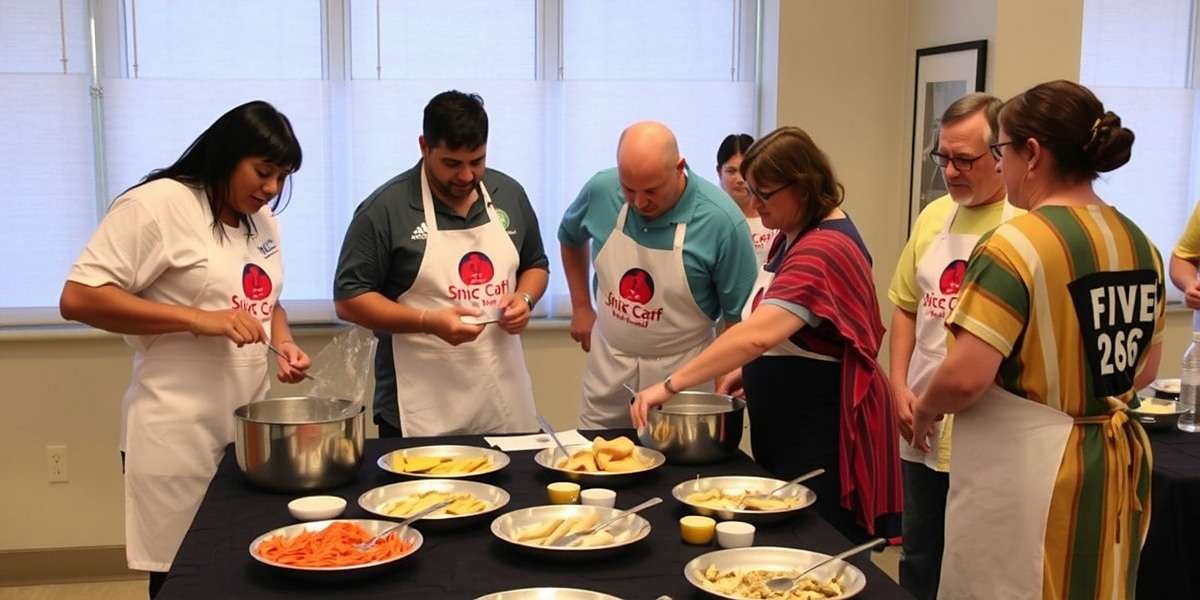
Player-shared advanced cooking techniques for Spice Odyssey Indian Trail showing regional cooking methods
Shop Management Best Practices 🛠️
Running a successful spice shop in Spice Odyssey Indian Trail requires strategic planning and customer service skills, and players have identified several key practices that lead to success.
Players from Maharashtra emphasize the importance of "visual merchandising" – arranging spices in an appealing manner that makes customers want to explore. They recommend grouping spices by regional cuisine to make it easier for customers to find everything they need for a particular dish.
Customer relationship management is another area where players have developed expertise. South Indian players often use the "memory method," keeping track of regular customers' preferences and surprising them with hard-to-find spices they've mentioned in previous visits. This technique increases customer loyalty and leads to better reviews and higher profits.
Exploration and Discovery Tips 🔍
Uncovering all the secrets of Spice Odyssey Indian Trail requires careful exploration, and players have shared valuable tips for finding rare spices and hidden content.
North Eastern players recommend exploring during the monsoon season in-game, when many rare medicinal herbs appear in the forests of Assam and Meghalaya. They also suggest interacting with tribal elders in these regions, who often reveal the locations of hidden spice gardens.
Coastal players from Kerala and West Bengal have discovered that early morning is the best time to find rare seafood and marine spices. They recommend checking fishing villages at dawn, when new catches arrive and special trading opportunities become available.
Secrets of Rare Spice Locations
"The most valuable spices in Spice Odyssey Indian Trail are often found near ancient temples. In Tamil Nadu, check the surroundings of Chola-era temples during Kartik Poornima for rare saffron. In Rajasthan, the area around Jain temples yields exceptional cardamom during the month of Shravan. These locations are not marked on the main map - you have to explore off the beaten path!" - Lakshmi Subramanian, Chennai (Rare Spice Collector)
Festival Event Optimization 🎊
Maximizing rewards during limited-time festival events is a priority for many players, and community members have developed detailed strategies for each major festival in Spice Odyssey Indian Trail.
Diwali strategies often involve focusing on sweet recipes that can be prepared quickly and sold at premium prices. Players in Uttar Pradesh recommend specializing in peda and gulab jamun, which have high profit margins and can be produced in large quantities.
For Holi events, players from Bihar and Uttar Pradesh suggest stockpiling ingredients for gujiya and thandai well in advance, as prices for these items increase dramatically as the festival approaches. They also recommend participating in color-throwing mini-games early in the event when competition is less fierce.
Seasonal Content and Updates in Spice Odyssey Indian Trail
The development team of Spice Odyssey Indian Trail maintains a regular schedule of content updates, ensuring that the game remains fresh and engaging for long-term players. These updates often tie into seasonal changes and cultural events, providing players with new content that reflects the real-world calendar.
Seasonal Themes and Gameplay Changes 🍂
Spice Odyssey Indian Trail features dynamic seasonal changes that affect gameplay in meaningful ways. During the monsoon season, for example, certain spices become more abundant in coastal regions, while travel between regions becomes more difficult due to weather conditions. This adds a layer of strategy as players must adapt their trading routes and inventory management to seasonal conditions.
The winter season brings its own challenges and opportunities, with cold-weather crops becoming available and demand increasing for warming spices like ginger, cinnamon, and cloves. Players in northern regions must prepare for snowfall that can block certain trade routes, while southern regions enjoy milder weather and increased tourism.
Each season in Spice Odyssey Indian Trail introduces unique recipes that can only be prepared with seasonal ingredients. These limited-time dishes are highly sought after by in-game customers, providing players with opportunities for increased profits and special rewards.
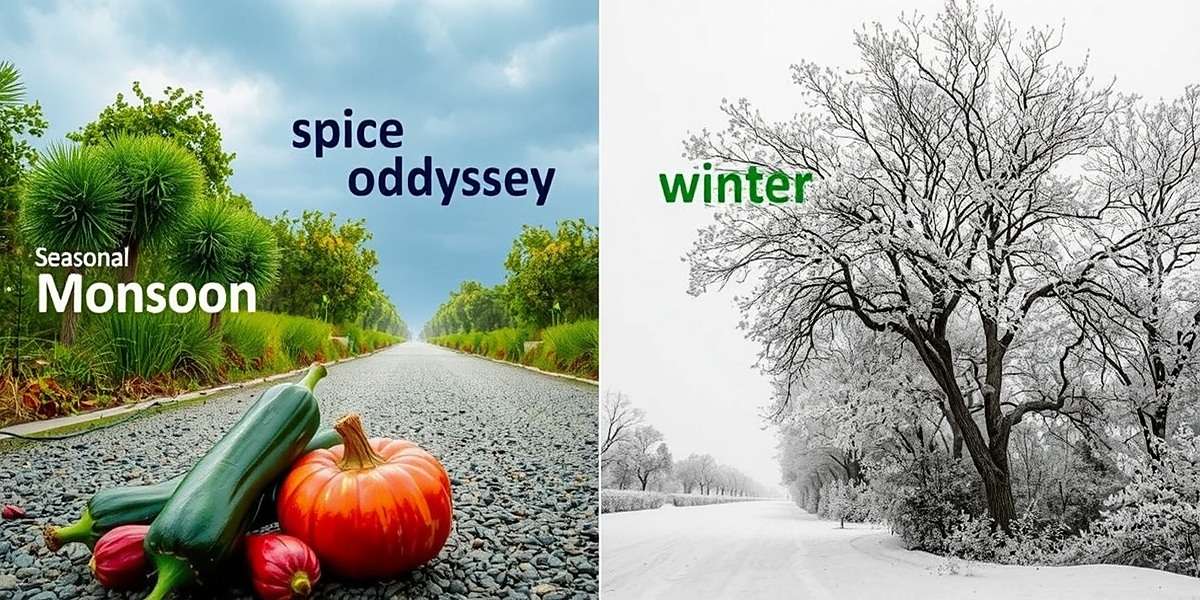
Seasonal variations in Spice Odyssey Indian Trail affect available spices, recipes, and travel conditions
Major Update Schedule 📅
The development team follows a predictable update schedule for Spice Odyssey Indian Trail, with four major content updates per year coinciding with India's main seasonal festivals: Holi, Eid, Diwali, and Pongal.
The Holi update typically introduces new spring recipes, vibrant festival decorations, and color-based mini-games. The 2023 Holi update added over 35 new regional Holi recipes and a cooperative "rangoli creation" mini-game that allowed players to collaborate on large-scale designs.
The Eid update focuses on Mughal cuisine and culture, with new recipes for biryani, kebabs, and sweets. The 2023 update included a detailed representation of Lucknow's famous food markets and introduced new trading mechanics based on historical spice routes.
Diwali updates are among the most anticipated, featuring extensive new content including special lighting decorations, firework displays, and a wide variety of traditional sweets from across India. The 2023 Diwali update broke records with over 60 new recipes and a special "diya lighting" event that involved over 9 million players collaborating to light virtual diyas across the game map.
The Pongal update celebrates harvest traditions across India, with region-specific harvest festivals from Makar Sankranti to Lohri. This update typically introduces new agricultural mechanics and focuses on fresh, seasonal produce. The 2023 update added Northeast India's Magh Bihu celebrations and introduced new rice-based recipes from across the country.
Limited-Time Events and Collaborations 🤝
In addition to seasonal updates, Spice Odyssey Indian Trail regularly hosts limited-time events and collaborations that generate excitement in the player community.
One of the most popular event series is "Master Chef Special," which features collaborations with famous Indian chefs. Each event invites a renowned chef to contribute exclusive recipes to the game and share cooking tips through in-game videos. Past collaborations have included Sanjeev Kapoor, Madhur Jaffrey, and Manish Mehrotra, among others.
The "Heritage Series" events focus on preserving and celebrating endangered traditional recipes and cooking techniques. These events often partner with cultural organizations and museums to document and digitize rare recipes that might otherwise be lost. Players who participate in these events receive special "Heritage Guardian" badges and contribute to real-world preservation efforts.
Upcoming Special Events
The much-anticipated "Royal Cuisine" event launching next month will feature recipes from the royal kitchens of India's former kingdoms, including rare dishes from the Mughal, Maratha, and Rajput courts. Players will have the opportunity to learn cooking techniques once reserved for royal chefs and prepare dishes using historically accurate ingredients and methods.
Future Developments and Roadmap for Spice Odyssey Indian Trail
The development team behind Spice Odyssey Indian Trail has shared an ambitious roadmap for the game's future, with exciting new features and content planned for the coming year. These developments aim to expand the game's world, deepen its gameplay mechanics, and further celebrate India's cultural diversity.
New Regional Expansions 🌱
One of the most anticipated upcoming features is the expansion of Spice Odyssey Indian Trail to include more detailed representations of India's Northeast states. Scheduled for release in early 2024, this expansion will feature the unique cuisines and cultures of Arunachal Pradesh, Nagaland, Manipur, and Mizoram.
Players will be able to collect rare Himalayan spices, learn traditional Naga fermented recipes, and participate in cultural events like the Hornbill Festival. The expansion will also introduce new trading partners from these regions and unique transportation methods adapted to mountainous terrain.
Later in 2024, the development team plans to release a major update focusing on India's island territories, including the Andaman and Nicobar Islands and Lakshadweep. This expansion will feature seafood-based recipes, coconut farming, and unique marine spices not found in other regions of India.

Concept art for the upcoming Northeast India expansion in Spice Odyssey Indian Trail featuring traditional Naga cooking and landscapes
New Gameplay Features 🆕
The development team has announced several exciting new gameplay features coming to Spice Odyssey Indian Trail in 2024. One of the most anticipated is the "Spice Garden" feature, which will allow players to grow their own spices rather than relying solely on trading and collection.
This new system will include region-specific farming techniques, seasonal planting cycles, and organic farming practices. Players will need to learn about soil types, climate requirements, and natural pest control methods to successfully cultivate rare and valuable spices.
Another major feature in development is the "Culinary School," where players can teach and learn from each other. Experienced players will be able to host virtual cooking classes, sharing their expertise with newer players in exchange for in-game rewards. This feature aims to strengthen the game's community aspect and make advanced cooking techniques more accessible to all players.
The team is also working on a "Food History" mode that will allow players to explore the evolution of Indian cuisine through different historical periods. From ancient Indus Valley cooking methods to Mughal influences and colonial-era adaptations, this educational mode will provide context and depth to the game's recipes and ingredients.
Technical Improvements 💻
In addition to new content, the developers of Spice Odyssey Indian Trail are working on several technical improvements to enhance the player experience. One focus area is improving the game's performance on low-end devices, ensuring that players across India can enjoy the game regardless of their smartphone's capabilities.
The team is also developing a more robust offline mode that will allow players with limited internet access to enjoy more of the game's features. This includes the ability to continue trading, cooking, and managing their shop without an internet connection, with progress syncing once connectivity is restored.
Accessibility improvements are another priority, with new features planned to make Spice Odyssey Indian Trail more accessible to players with disabilities. These include enhanced screen reader support, adjustable text sizes, and colorblind-friendly interfaces.
Cultural Impact and Educational Value of Spice Odyssey Indian Trail
Spice Odyssey Indian Trail has transcended its role as a mobile game to become a cultural phenomenon with significant educational value. The game's accurate portrayal of Indian cuisine and culture has made it a valuable tool for cultural preservation and education, while its broad appeal has introduced traditional knowledge to new audiences.
Preserving Culinary Heritage 🏺
One of the most significant impacts of Spice Odyssey Indian Trail has been its role in preserving and documenting India's diverse culinary heritage. The game features over 250 traditional recipes, many of which are rarely seen in modern cooking or at risk of being forgotten as older generations pass away.
The development team worked with culinary historians and elderly members of communities across India to document these recipes accurately. For many players, especially younger generations, the game has been their first introduction to traditional dishes from their own region that they had never tasted or heard of before.
In recognition of its preservation efforts, Spice Odyssey Indian Trail has been honored by the National Museum of Indian Culinary Arts and has partnered with the Ministry of Culture on several initiatives to document and preserve traditional recipes from across India.
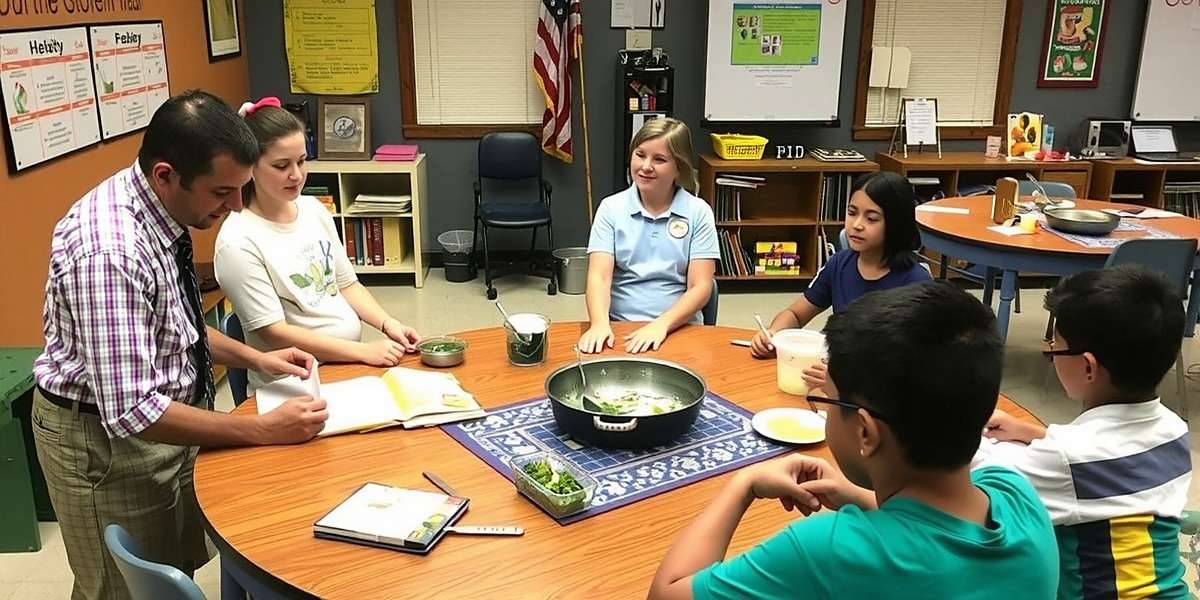
Students in a Delhi school using Spice Odyssey Indian Trail as part of their cultural studies curriculum
Educational Applications 📚
Schools and educational institutions across India have embraced Spice Odyssey Indian Trail as an educational tool. The game's accurate depictions of geography, culture, and traditional practices make it an engaging supplement to classroom learning.
Many teachers use the game to teach students about Indian geography, with students tasked with identifying regions based on their cuisine and culture. The game's trading mechanics have also been used to teach basic economic principles like supply and demand, trade routes, and regional specialization.
In 2023, the government of Kerala introduced Spice Odyssey Indian Trail into the curriculum for grades 6-8 as part of their cultural studies program. This initiative was so successful that several other states, including Tamil Nadu, West Bengal, and Rajasthan, have announced plans to follow suit.
Cross-Cultural Understanding 🤝
Spice Odyssey Indian Trail has played a unique role in fostering cross-cultural understanding within India. Many players report that the game has introduced them to regional cuisines and traditions they were previously unfamiliar with, breaking down stereotypes and encouraging appreciation for India's diversity.
Northern players often express surprise at learning about the complexity of South Indian vegetarian cuisine, while many South Indian players develop newfound appreciation for North Indian bread-making techniques through the game. Players from urban areas frequently comment on learning about rural traditions they had never encountered.
The game's multiplayer features have facilitated connections between players from different regions, with many forming friendships that extend beyond the game. Players often share real recipes and cooking tips with each other, creating a virtual exchange of culinary knowledge that transcends geographical boundaries.
Economic Impact 💹
Interestingly, Spice Odyssey Indian Trail has had a measurable impact on the real-world spice trade in India. Several spice farmers and traders report increased demand for traditional and rare spices that are featured prominently in the game.
In Kerala, sales of high-quality black pepper increased by 30% following the game's release, with many retailers reporting that customers specifically asked for varieties featured in Spice Odyssey Indian Trail. Similarly, sales of traditional grinding stones and mortar and pestle sets have increased as players seek to replicate the game's cooking experience in real life.
The game has also inspired a new generation of young chefs and food entrepreneurs, with several players reporting that their experience with Spice Odyssey Indian Trail motivated them to start their own spice businesses or restaurants specializing in regional cuisine.
Conclusion
Spice Odyssey Indian Trail represents a new type of mobile gaming experience – one that entertains while educating, engages while preserving, and connects players across cultural and geographical boundaries. Through its careful attention to detail, respect for cultural authenticity, and innovative gameplay, the game has achieved something rare in the gaming world: it has become a cultural artifact in its own right.
What makes Spice Odyssey Indian Trail truly special is how it has resonated with players across India and beyond. It has succeeded in making traditional knowledge accessible and engaging for younger generations, preserving culinary traditions that might otherwise be lost, and fostering a deeper appreciation for India's incredible diversity.
Whether you're a casual gamer looking for an enjoyable way to pass the time, a food enthusiast eager to learn more about Indian cuisine, or a parent seeking an educational game that teaches children about their cultural heritage, Spice Odyssey Indian Trail offers something meaningful and valuable.
As the game continues to evolve and expand with new content and features, it is poised to remain a significant cultural phenomenon and a beloved part of India's gaming landscape for years to come. Its success demonstrates that games can be more than just entertainment – they can be powerful tools for education, cultural preservation, and social connection.